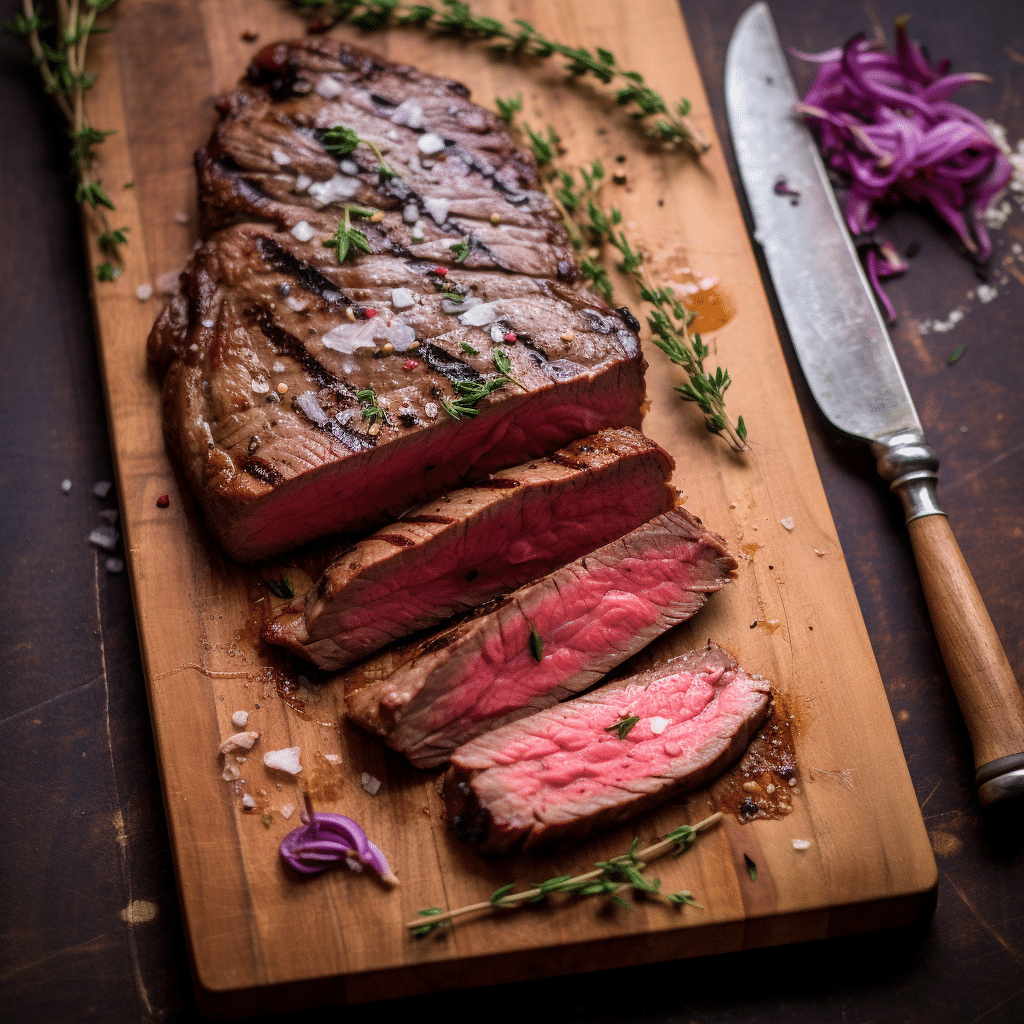Perfectly Seared Bison Steak
Jump to Recipe
I’ve discovered that cooking a perfect bison steak is akin to orchestrating a symphony. Every element must come together in harmony, from selecting the right cut to mastering the heat on your grill. If you’re looking for an exquisite alternative to beef, look no further than the majestic bison.

Perfectly Seared Bison Steak
Ingredients
Method
- Bring to Room Temperature: Take the bison steak out of the fridge about 30 minutes before cooking.
- Season: Pat it dry, then sprinkle generously with salt and pepper on both sides.
- Preheat Your Pan: Set a cast-iron skillet over high heat until it’s very hot (lightly smoking).
- Sear the Steak: Gently place the steak in the skillet. Cook for 3–4 minutes on each side for medium-rare.
- Baste (Optional): Add butter, smashed garlic, and thyme to the pan. Tilt the skillet and spoon the butter mixture over the steak for extra flavor.
- Check the Temperature: Aim for an internal temperature of 130–140°F (54–60°C).
- Rest the Steak: Transfer the steak to a plate or board, tent loosely with foil, and rest for 5–10 minutes.
- Slice and Serve: Slice against the grain for tenderness. Plate and enjoy immediately.
Notes
• Overcooking can make the meat tough.
• A meat thermometer helps achieve the perfect doneness.
FAQ
What’s the Ideal Thickness for a Bison Steak?
I’ve found that bison steaks around 1 to 1.5 inches thick strike the perfect balance between a juicy center and a tantalizing sear.
Is Preparing Bison Different from Beef?
Bison, by nature, is leaner than beef, which means it requires tender love and care to avoid overcooking. I treat each steak with precision to keep them succulent.
How Do I Season My Bison Steak For Maximum Flavor?
A simple sprinkle of salt and pepper can enhance the natural flavors wonderfully. Sometimes I also opt for a dash of garlic powder or herbs for an extra zing!
Should I Marinate My Bison Steak Before Cooking?
While not necessary, marinating can infuse additional moisture into your meat. If you’re up for experimenting, try using a light marinade for a few hours before cooking.
To Sear First or Directly Grill: What’s Best for Bison Steaks?
I firmly believe in searing my bison on high heat swiftly then finishing with indirect heating method; this technique locks in flavor beautifully.
Can You Share Tips on Achieving the Perfect Medium-Rare Cook?
Sure thing! Aim to pull off your bison steak from the heat when it hits an internal temperature about 5 degrees below your target temperature — rest assured, it’ll continue to cook as it sits.
How Long Should Bison Steaks Rest After Cooking?
Giving steaks a good 5-10 minute rest under foil after they leave the fire works wonders in distributing those juices back where they belong.
In Terms of Sides, What Pairs Well With A Juicy Bison Steak?
You can never go wrong with classics like roasted veggies or mashed potatoes. They stand by our star entrée without stealing the spotlight too much!
If My Goal Is To Avoid Charred Edges, Any Advice On Flame Control During Grilling?
Maintaining medium-high heat gives you control while achieving that caramelization we all crave; vouching for vigilance here prevents unsightly charred edges every time.
For First-Timers Cooking Bison at Home, Any Final Words Of Wisdom?
Pace yourself and trust your instincts — remember that less cook time is key given how lean bison is compared with traditional beef cuts.